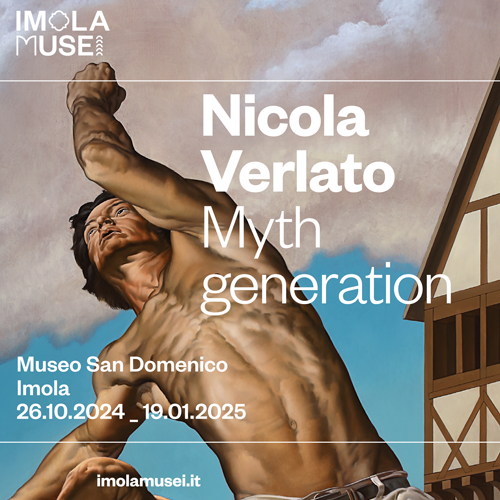Aosta, Megalithic Area Archaeological Park reopens: a journey of 6 millennia
In Aosta starting Nov. 11, the Archaeological Park of the Megalithic Area, which summarizes six millennia of history in an area of about one hectare, covered by the large structure built to protect the excavations, returns to view after renovation and rearrangement in both the museological and museographic spheres: it is one of the very rare sites to present both the original monuments and the museum in the same place. The new layout is presented starting with theentrance, which has been moved to the corner of Corso Saint-Martin-de-Corléans and Via Italo Mus. We leave everyday life and traffic noise behind to enter a space protected by a large window, bathed in soft light. A corridor, the Ramp of Time, allows us to take a journey back through the centuries enriched by three-dimensional elements: we descend to 6,000 years ago, six meters deep. The view then opens wide to the covered area, a large “nave” that holds prehistoric structures dating from the late Neolithic to the Early Bronze Age.
In the basement, one can see the results of an excavation begun more than fifty years ago in 1969, which brought to light intact evidence of a past still shrouded in mystery. Next door is an Immersive Hall, on whose curved walls are projected images that clearly illustrate the succession of archaeological phases. On the same level is the Civic Hall equipped to host lectures and meetings.
The oldest phase of the site dates back to the fifth millennium B.C., and is that ofcultic ploughing, charged with symbolism: it brings the clock back to the time of the founding rites by which the community established a strong relationship with the land. The itinerary in the megalithic area continues lingering on wooden poles and lithic slabs, until arriving in the Great Hall of Stelae, with dozens of anthropomorphic stone sculptures reproducing men and women with clothing, ornaments, and weapons. The tour itinerary then traverses the transitional phase between the Copper Age and the Bronze Age, at the beginning of the second millennium B.C.E., culminating in a room dedicated to Protohistory: the period when the area became the site of agricultural as well as funerary activities. The symbol of this transformation is the large burial mound, which for the first time can be seen with its original floor level. Climbing up a ramp, the site is visible from an elevated perspective, overlooking the vestiges of antiquity.
 Archaeological Park of
Archaeological Park of Archaeological Park of the Megalithic Area of
Archaeological Park of the Megalithic Area of Archaeological Park of the Megalithic Area of
Archaeological Park of the Megalithic Area of Archaeological Park of the Megalithic Area of
Archaeological Park of the Megalithic Area of Archaeological
Archaeological
Going up to the upper floor, one reaches the area dedicated to theRoman era. A first section is dedicated to therustic settlement: it is an opportunity to discover themes and artifacts related to daily life at the time of Augusta Praetoria, ancient Aosta. A second section makes it possible to visit the necropolis excavated over the years along the road, under the parish church and the kindergarten: nearly 20 tombs characterized by very rich grave goods, which make it possible to reconstruct funerary practices and rituals that differ greatly in chronology and type. The medieval section concludes the tour: at this time the Saint-Martin-de-Corléans area featured various structures gravitating around the small local church, mentioned in a papal bull of 1176.
“The Megalithic Area of Aosta,” says Cristina de La Pierre, superintendent of Aosta, “is a site whose historical-archaeological relevance is undoubtedly proportional to the considerable efforts made over the years by various professionals to know it, study it, protect it, enhance it and make it usable. The date of November 11, 2023 certainly represents the achievement of a fundamental goal: the opening to the public of a unique archaeological site whose visit will represent a cultural experience difficult to forget.”
“The grandeur and richness of a site like the Megalithic Area make Aosta a capital of European megalithism,” says Jean-Pierre Guichardaz, regional councillor for Cultural Heritage and Activities, Educational System and Policies for Intergenerational Relations. “With the opening of this site, the system of regional cultural offerings is enriched with a jewel of international scope that, in addition to embellishing the city’s archaeological heritage, confirms and strengthens the historical and cultural identity of a border Alpine territory that has always been a place of encounter, exchange and cultural contamination.”
To mark the reopening, on Saturday, Nov. 11 and Sunday, Nov. 12, free guided tours will be offered by Soprintendenza archaeologists from 10 a.m. to 6 p.m. Afterwards, from Monday, Nov. 13 to Sunday, Nov. 19, free accompanied tours will be organized with extended hours 10 a.m.-6 p.m. More information at https://valledaostaheritage.com/
 |
| Aosta, Megalithic Area Archaeological Park reopens: a journey of 6 millennia |
Warning: the translation into English of the original Italian article was created using automatic tools. We undertake to review all articles, but we do not guarantee the total absence of inaccuracies in the translation due to the program. You can find the original by clicking on the ITA button. If you find any mistake,please contact us.





























